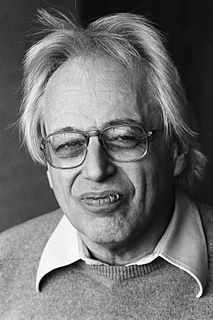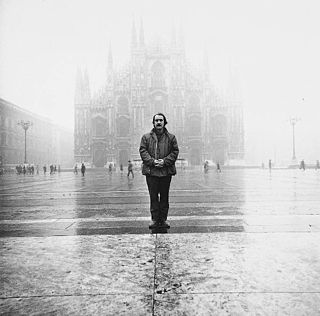 W
WNeo-Dada was a movement with audio, visual and literary manifestations that had similarities in method or intent with earlier Dada artwork. It sought to close the gap between art and daily life, and was a combination of playfulness, iconoclasm, and appropriation. In the United States the term was popularized by Barbara Rose in the 1960s and refers primarily, although not exclusively, to work created in that and the preceding decade. There was also an international dimension to the movement, particularly in Japan and in Europe, serving as the foundation of Fluxus, Pop Art and Nouveau réalisme.
 W
WGenpei Akasegawa was a pseudonym of Japanese artist Katsuhiko Akasegawa , born March 27, 1937 – October 26, 2014 in Yokohama. He used another pseudonym, Katsuhiko Otsuji , for literary works. A member of the influential artist groups Neo-Dada Organizers and Hi-Red Center, Akasegawa went on to maintain a multi-disciplinary practice throughout his career as an individual artist. He has had retrospective exhibitions at the Hiroshima City Museum of Contemporary Art, Chiba City Museum, and Oita City Museum. His work is in the permanent collection at Museum of Modern Art in New York. Artist Nam June Paik has described Akasegawa as “one of those unexportable geniuses of Japan.”
 W
WShūsaku Arakawa was a Japanese conceptual artist and architect. He had a personal and artistic partnership with the writer and artist Madeline Gins that spanned more than four decades in which they collaborated on a diverse range of visual mediums, including: painting & printmaking, experimental filmmaking, performance art, and architectural & landscape design.
 W
WGuglielmo Achille Cavellini, also known as GAC, was an Italian artist and art collector. After an initial activity as a painter, in the 1940s and 1950s he became one of the major collectors of contemporary Italian abstract art, developing a deep relationship of patronage and friendship with the artists. This experience has its pinnacle in the exhibition Modern painters of the Cavellini collection at the National Gallery of Modern Art in Rome in 1957. In the 1960s Cavellini resumed his activity as an artist, with an ample production spanning from Neo-Dada to performance art to mail art, of which he became one of the prime exponents with the Exhibitions at Home and the Round Trip works. In 1971 he invented autostoricizzazione (self-historicization), upon which he acted to create a deliberate popular history surrounding his existence. He also authored the books Abstract Art (1959), Man painter (1960), Diary of Guglielmo Achille Cavellini (1975), Encounters/Clashes in the Jungle of Art (1977) and Life of a Genius (1989).
 W
WJim Dine is an American artist whose œuvre extends over sixty years. Dine’s work includes painting, drawing, printmaking, sculpture and photography; his early works encompassed assemblage and happenings, while in recent years his poetry output, both in publications and readings, has increased.
 W
WFluxus was an international, interdisciplinary community of artists, composers, designers and poets during the 1960s and 1970s who engaged in experimental art performances which emphasized the artistic process over the finished product. Fluxus is known for experimental contributions to different artistic media and disciplines and for generating new art forms. These art forms include intermedia, a term coined by Fluxus artist Dick Higgins; conceptual art, first developed by Henry Flynt, an artist contentiously associated with Fluxus; and video art, first pioneered by Nam June Paik and Wolf Vostell. Dutch gallerist and art critic Harry Ruhé describes Fluxus as "the most radical and experimental art movement of the sixties."
 W
WTetsumi Kudо̄ , was a Japanese artist associated with the Neo-Dada tradition.
 W
WGeorge Maciunas was a Lithuanian American artist, born in Kaunas. A founding member and the central coordinator of Fluxus, an international community of artists, architects, composers, and designers, he is most famous for organising and performing early happenings and for assembling a series of highly influential artists' multiples.
 W
WSașa Pană was a Romanian avant-garde poet, novelist, and short story writer.
 W
WThree Bagatelles, for David Tudor, better known by its original French title Trois bagatelles, is a 1961 solo piano composition by Hungarian composer György Ligeti. The composition is well known for its tacet sections.
 W
WJean Tinguely was a Swiss sculptor best known for his kinetic art sculptural machines that extended the Dada tradition into the later part of the 20th century. Tinguely's art satirized automation and the technological overproduction of material goods.